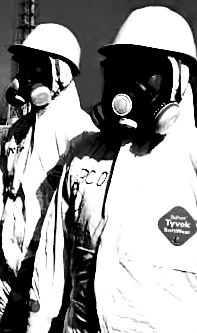Nuclear firm says frozen wall could work
 Japan's Industry Ministry has given a glimpse of the soil-freezing technique it hopes will stop the spread of a radioactive material from the Fukushima nuclear disaster site.
Japan's Industry Ministry has given a glimpse of the soil-freezing technique it hopes will stop the spread of a radioactive material from the Fukushima nuclear disaster site.
Officials have showed news media reporters a test site for the underground walls of frozen soil.
The full-scale version of the futuristic safety scheme will begin construction next month.
The idea is to freeze a wall of Earth to help prevent groundwater from mixing with contaminated water at Tokyo Electric Power's crippled Fukushima No. 1 nuclear power plant.
The Japanese government says it will build a number of 30-metre deep underground walls around the 1.5-kilometre perimeter of reactors No. 1 to No. 4.
Since the Fukushima Daiichi nuclear disaster in 2011, groundwater has been flowing into reactor buildings and becoming highly contaminated before moving out into the ground and natural water supplies.
Last Friday, the Agency for Natural Resources and Energy at the Ministry of Land, Infrastructure, Transport and Tourism presented a 1.2-metre deep, five-square-metre hole used to monitor frozen soil walls intended to help stem the flow.
The frozen wall of dirt was 3 degrees below zero and is extremely strong. The lack of water at the bottom of the testing hole was proof that the walls block groundwater, according to the agency.
More details are available in the following news report;







 Print
Print